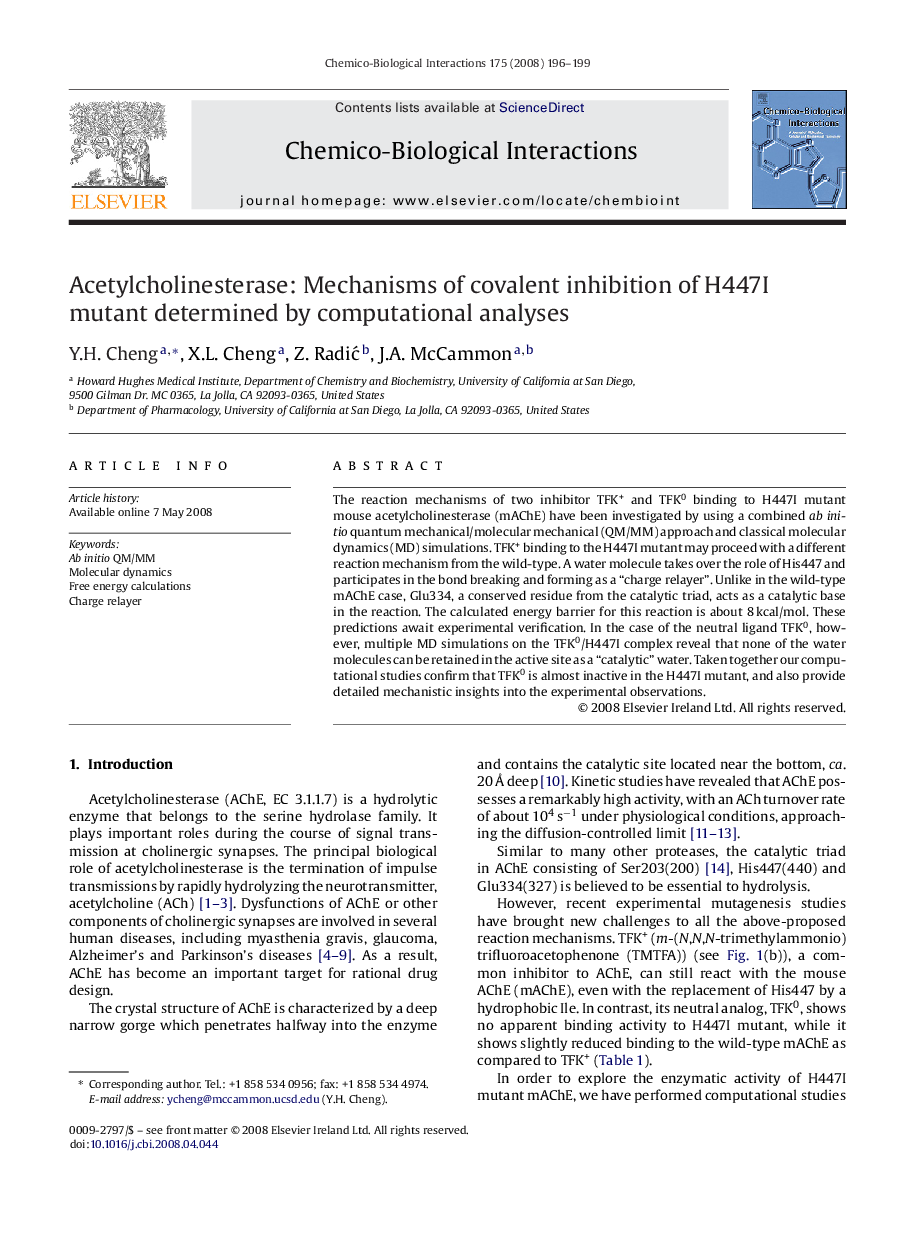| Article ID | Journal | Published Year | Pages | File Type |
|---|---|---|---|---|
| 2581584 | Chemico-Biological Interactions | 2008 | 4 Pages |
Abstract
The reaction mechanisms of two inhibitor TFK+ and TFK0 binding to H447I mutant mouse acetylcholinesterase (mAChE) have been investigated by using a combined ab initio quantum mechanical/molecular mechanical (QM/MM) approach and classical molecular dynamics (MD) simulations. TFK+ binding to the H447I mutant may proceed with a different reaction mechanism from the wild-type. A water molecule takes over the role of His447 and participates in the bond breaking and forming as a “charge relayer”. Unlike in the wild-type mAChE case, Glu334, a conserved residue from the catalytic triad, acts as a catalytic base in the reaction. The calculated energy barrier for this reaction is about 8Â kcal/mol. These predictions await experimental verification. In the case of the neutral ligand TFK0, however, multiple MD simulations on the TFK0/H447I complex reveal that none of the water molecules can be retained in the active site as a “catalytic” water. Taken together our computational studies confirm that TFK0 is almost inactive in the H447I mutant, and also provide detailed mechanistic insights into the experimental observations.
Related Topics
Life Sciences
Environmental Science
Health, Toxicology and Mutagenesis
Authors
Y.H. Cheng, X.L. Cheng, Z. RadiÄ, J.A. McCammon,
